Last Chance to Catch NYC's Holiday Notalgia Train
We met the voices of the NYC subway on our nostalgia ride this weekend!


The brave men and women who have fought in American conflicts throughout the centuries are honored in many places around New York City. Stunning sculptures, plazas, and patriotic monuments commemorate their service. Check out 10 war memorials in NYC dedicated to veterans, soldiers, and service members that you can visit now!
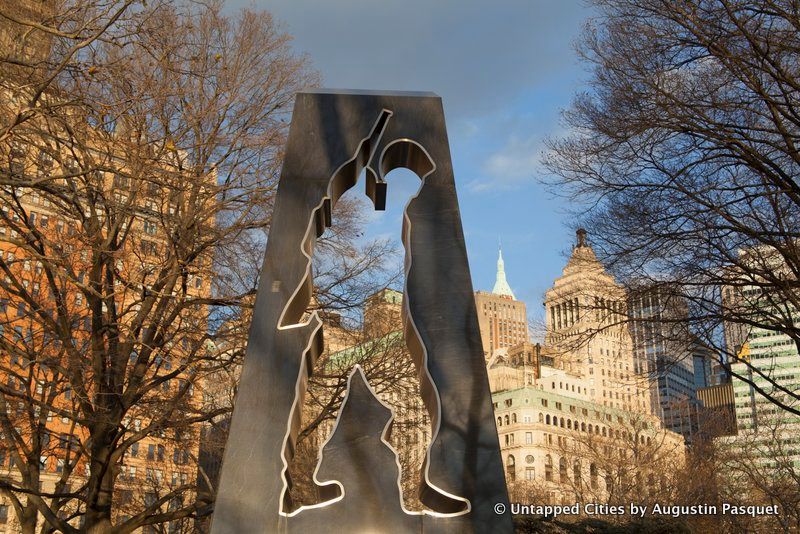
At 10am on July 27th, a sundial in The Battery, also known as The Korean War Veterans Memorial, will pay tribute to the veterans of the Korean War. Designed by Welsh artist, Mac Adams, it commemorates the official ceasefire declared at that exact time and date in 1953.
The 15-foot obelisk of black granite, which sits slightly north-west of Fritz Koenig’s tribute to 9/11, “Sphere,” contains a cutout in the shape of a Korean War soldier, lit up by the sun and offering views of both the Statue of Liberty and Ellis Island. When the sun shines straight down the center of “The Universal Soldier,” the piece is filled and the plaque located at the foot of the statue is illuminated.
New York City also commemorates the “forgotten war” with two more memorials in NYC: the Korean War Veterans Plaza at Cadman Plaza in Downtown Brooklyn and the Korean War Veterans Parkway in Staten Island (re-named in 1997 from Richmond Parkway).
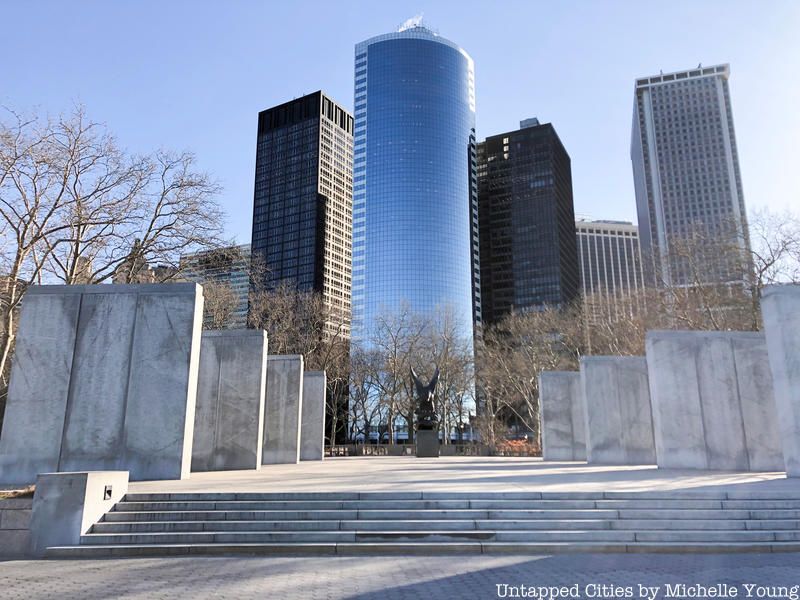
New York City possesses one of three American Battle Monument Commission memorials located in the United States. Created in 1923, the Commission is the government agency responsible for “designing, constructing, operating and maintaining permanent American cemeteries in foreign countries and establishing and maintaining U.S. military memorials, monuments and markers where American armed forces have served overseas since April 6, 1917.” The East Coast War Memorial, one of the grandest war memorials in NYC, also located in The Battery, can be found east of Dewey Promenade.
Designed by the architectural firm of Gehron and Seltzer, the monument honors the 4,601 missing American service members who lost their lives in the Atlantic Ocean during WWII. It consists of a large, paved plaza with 19-foot granite pylons that are inscribed with the names and ranks of the deceased. A bronze eagle, sculpted by Albino Manca, sits on the eastern side of the plaza and represents the “act of mourning at the watery grave.”
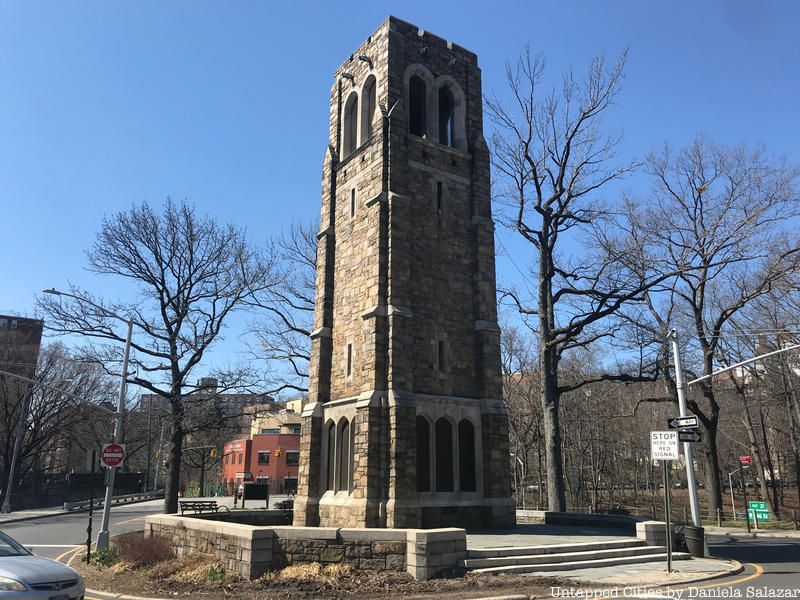
One of the most unique war memorials in NYC is located in Bell Tower Park. The Riverdale Monument commemorates soldiers and WWI veterans from the neighborhoods of Riverdale, Spuyten Duyvil and Kingsborough in the Bronx. The park itself is named after the 500-ton tower and Spanish bell located on the site.
According to NYC Parks & Recreation, the bell was originally cast in 1762 for a Mexican monastery. It was later captured by General Winfield Scott during the Mexican War and brought back to New York City, where it was originally housed at Greenwich Village’s Jefferson Market. Following a second relocation to a Riverdale firehouse, the bell was installed in its current tower, which was moved 700 feet south to clear space for the Henry Hudson Parkway.
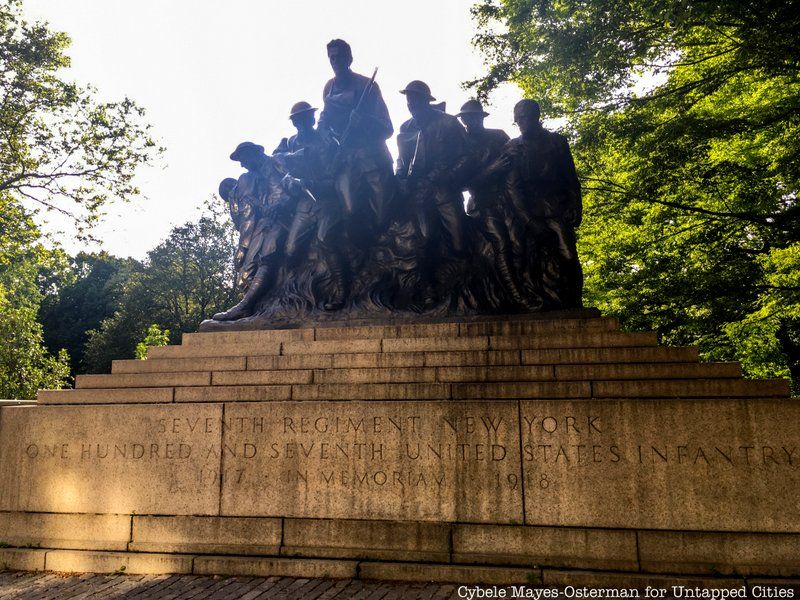
Sitting among a wide collection of statues in Central Park, the 107th Infantry Memorial, designed by sculptor Karl Illava, features seven WWI foot soldiers (“doughboys”) in battle. It was donated by the Seventh Regiment New York 107th United Infantry Memorial Committee, and currently sits at the end of East 67th Street at Fifth Avenue.
According to NYC Parks & Recreation, Illava, who was a sergeant with the 107th, used his own hands as models to create the soldiers’ hands. The entire piece is set on top of a granite platform designed by architects Rogers and Haneman.
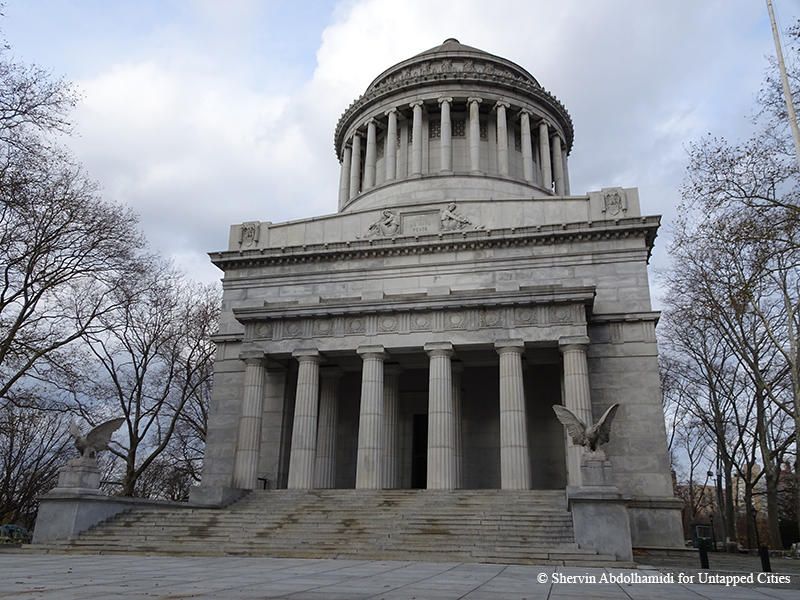
Washington D.C is typically the burial ground for America’s historic figures and great generals, but General Ulysses S. Grant, the great Civil War general and 18th President of the United States, is interred right here in New York City.
General Grant National Memorial, the final resting place of Ulysses S. Grant, is located on the northern end of Riverside Park adjacent to Columbia University and is one of the most well-known war memorials in NYC. In 1885, at the age of 63, the great general died of throat cancer in Wilton, New York. To garner support for a national monument in Grant’s honor, the incumbent mayor at the time, William Russell Grace, wrote a letter to New Yorkers, which led to the formation of the Grant Monument Association (GMA).
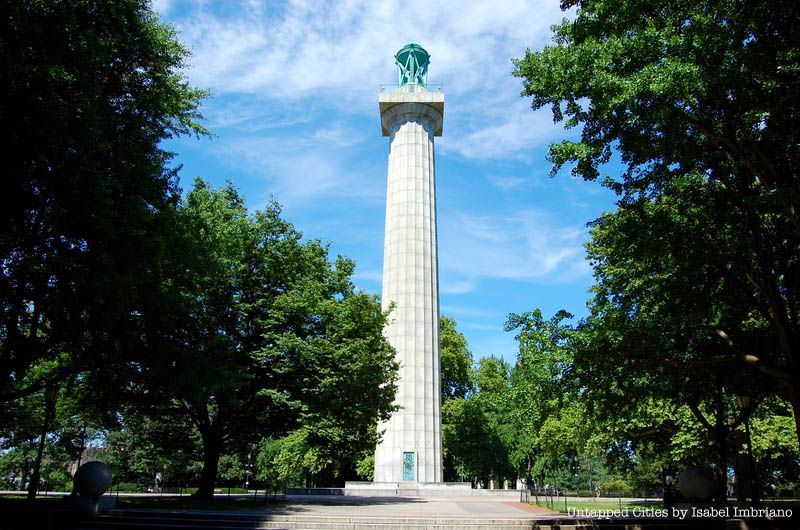
Installed in 1908, the 149-foot Prison Ship Martyrs Monument was erected to remember the more than 11,500 martyrs who died on British war ships in Wallabout Bay during the Revolutionary War. The notorious conditions aboard the ships, equally bad or worse than those in the sugar house prisons on land, were captured in the AMC Revolutionary War spy drama, TURN. Those who died on ship prisons like the HMS Jersey, the Falmouth and more, were thrown overboard or ferried to the Brooklyn shore.
Bodies were buried by Brooklyn residents in shallow graves in what is now the Brooklyn Navy Yard. Through erosion, bones began to emerge on the shoreline by 1808. The Tammany Society made the first motion that year to find a formal burial ground for the prison ship martyrs, a quest joined by Brooklyn citizens over the next few decades.
The current war memorial sits on the crypt where the bodies still remain in Fort Greene Park, though those buried here represent only a portion of the people that died aboard the prison ships. If you do wish visit the remains, The Society of Old Brooklynites hosts visits to it once a year but you have to be member of the society to enter. The only requirement is that you have to have lived or worked in Brooklyn for the past 25 years. See photos of the inside here!
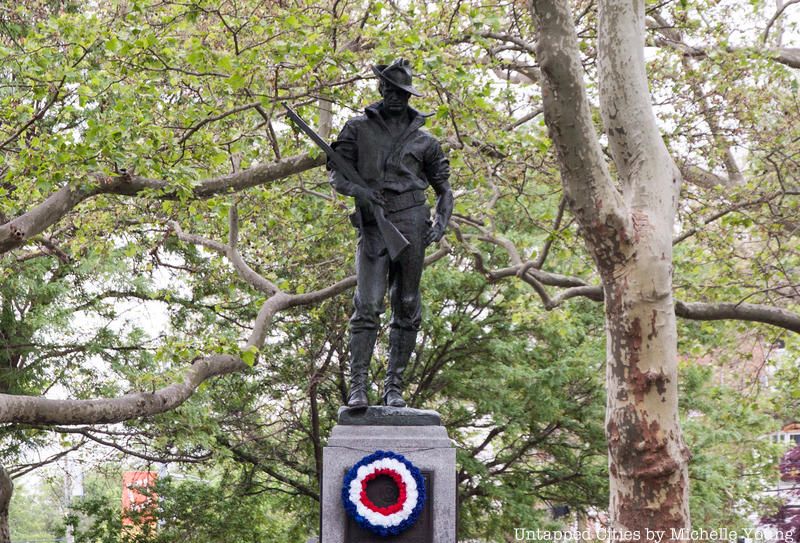
Located in Staten Island’s Tompkinsville Park, The Hiker statue honors local soldiers who served in the Spanish-American War. Dedicated in 1916, it was originally located in front of Staten Island Borough Hall, but was moved to its current location in 1925. It depicts a single foot soldier with a rifle hanging from his shoulder — an image derived from the long marches in the tropical Cuban climate that the infantry had to endure.
Today, additional tablets have been installed on The Hiker’s pedestal in honor of the Daughters of the American Revolution and those who served in the Civil War and WWI.
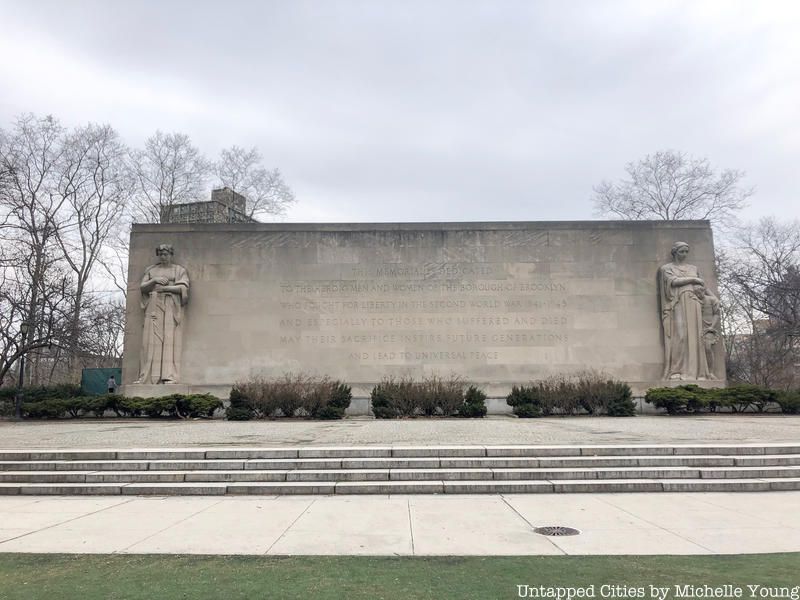
In addition to the Korean War Veterans Plaza, Brooklyn’s Cadman Plaza is home to The Brooklyn War Memorial, which was dedicated on November 12, 1951, in honor of the 327,000 service members of Brooklyn who served during World War II. The memorial was installed as an “outgrowth” of Parks Commissioner Robert Moses‘ plan to erect one consolidated WWII memorial for each borough.
Dedicated six years after the war, the Brooklyn War Memorial consists of a granite and limestone building with 11,500 engraved names and two relief figures. The reliefs depict a male warrior and a female with a child; together, they stand as symbols of victory and family.
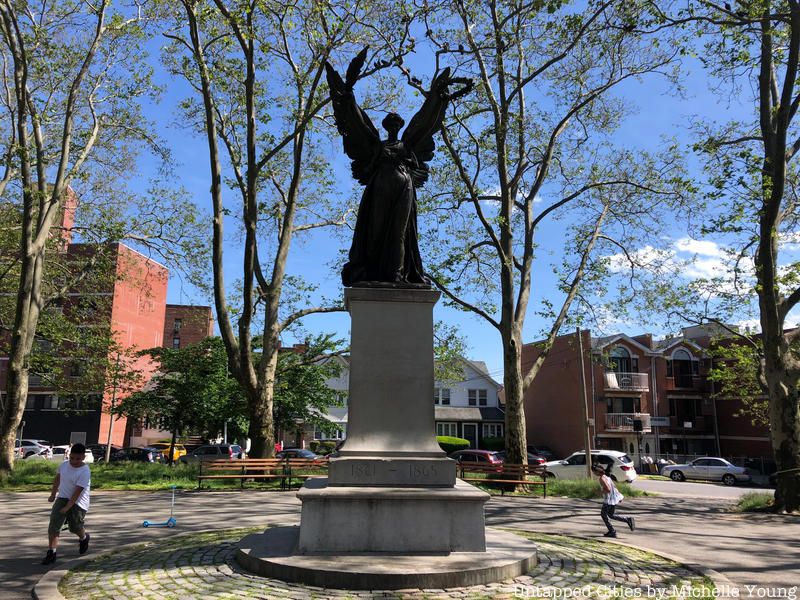
On 173rd Street and Hillside, inside Major Mark Park in Queens, sits the Soldiers and Sailors Monument — a bronze angel that honors Union Army soldiers and sailors from Queens who died during the Civil War. Originally erected on a small traffic island, the statue was moved to Major Mark Park in 1960.
It depicts an angel holding a laurel wreath in her left hand and a palm bough in her right; they are said to stand for victory and peace, respectively.
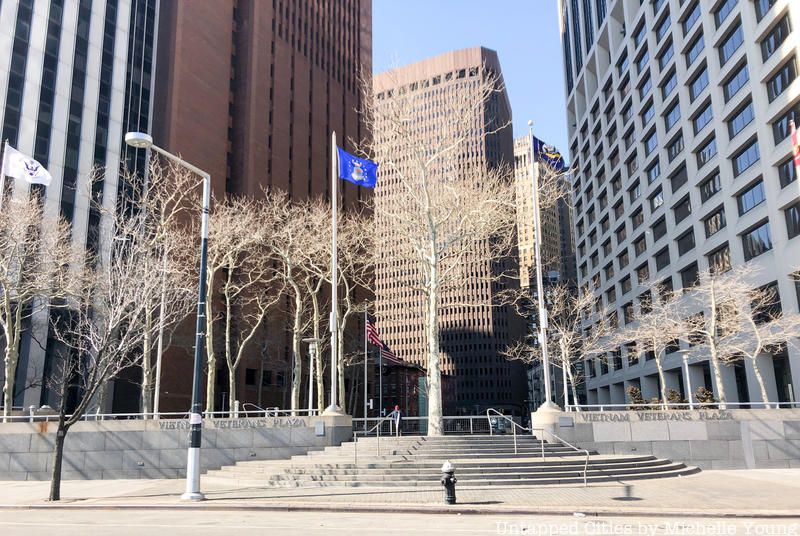
Upon raising $1 million in private donations, the Vietnam Veterans Memorial Commission provided the funding for the Vietnam Veterans Plaza, which was dedicated by Mayor Edward I. Koch on May 4, 1985; the memorial commemorates the 250,000 service members of New York City who served in the armed forces between 1964 to 1975 (especially the 1,741 who died during the Vietnam War).
Designed by architects Peter Wormser, William Fellows, and veteran Joseph Ferrandino, it features a granite shelf and a wall of glass blocks, engraved with excerpts of letters, poems, and diary entries written by news dispatches and members of the armed forces.
During a renovation of the monument site in 2001, additional features were installed including a stainless-steel map that provides details about the war, a new granite fountain, and the “Walk of Honor,” a series of 12 granite pylons with the names of the 1,741 lost heroes.
Next, check out Vintage Photos: Memorial Day in NYC Through the Ages and 10 Maritime Memorials in NYC
Subscribe to our newsletter